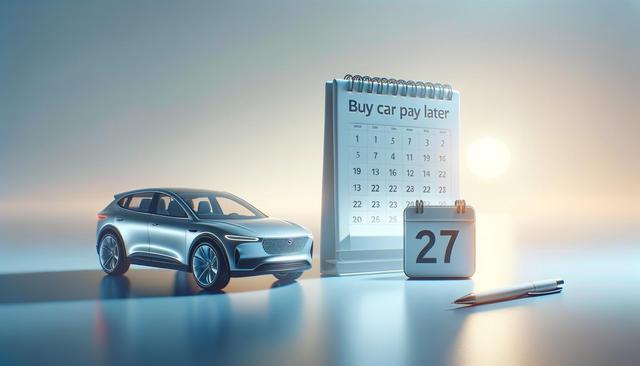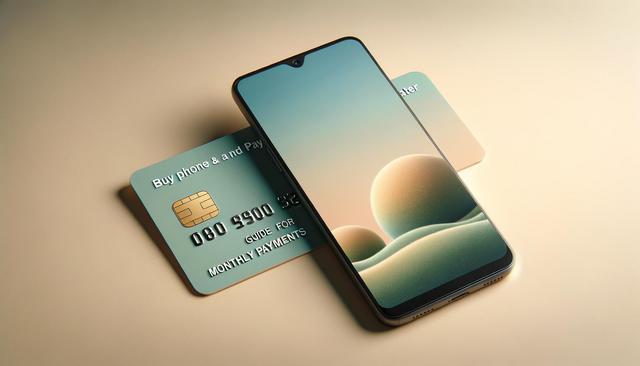Understanding the Concept: Buy a Car and Pay Later
The idea to Buy a Car and Pay Later has become increasingly popular among consumers who prefer to spread out the cost of a vehicle over time rather than paying the full price upfront. This approach allows buyers to drive off with their chosen vehicle and commit to manageable monthly payments. Whether you’re considering a new or used Auto Car, this financing option offers flexibility and convenience, especially for those who need a car quickly but may not have enough saved for a substantial down payment.
Typically, dealerships or financial institutions will offer several loan options that cater to different budgets and repayment terms. One of the most commonly discussed terms in recent years is the 97 Month Car Loan, which provides an extended repayment period that can significantly reduce the Monthly Car Payment. However, while this can make payments more affordable, it’s important to consider the total interest paid over such a long period.
Here are a few advantages of the buy-now-pay-later model for car purchases:
- Lower immediate financial burden
- Access to newer or more reliable vehicles
- Customizable loan terms based on budget
- Opportunity to build or improve credit with consistent payments
Still, it’s crucial to understand the loan details thoroughly before signing any agreement. Hidden fees, interest rates, and loan duration can impact the overall cost of the vehicle.
Evaluating Your Financial Readiness
Before you decide to Buy Car Pay Later, you should evaluate your financial situation carefully. While spreading out payments can help with monthly budgeting, it also means committing to a long-term financial obligation. It’s crucial to ensure that your income and expenses can comfortably support the Monthly Car Payment over the entire loan term.
Start by calculating your total monthly income and subtracting all essential expenses, such as housing, utilities, groceries, insurance, and existing loan payments. What remains is your discretionary income, and a portion of this should be allocated for your car payment. Financial experts often recommend that your total transportation costs—car payment, insurance, and fuel—should not exceed 15-20% of your monthly income.
Additional costs to consider include:
- Vehicle maintenance and repairs
- Registration and taxes
- Insurance premiums
- Fuel expenses
Being realistic about your financial capabilities can prevent future stress and help you maintain consistent payments, which is especially important if you’re looking to improve or maintain a strong credit score.
Choosing the Right Loan Term
The length of your auto loan plays a significant role in determining the Monthly Car Payment and overall cost of the vehicle. A 97 Month Car Loan, for instance, might offer lower monthly payments, but the extended term means you’ll likely pay more in interest over time. It’s essential to weigh the pros and cons of longer versus shorter loan terms based on your financial goals.
Here’s a breakdown of what different loan terms typically entail:
- Short-term loans (36–48 months): Higher monthly payments, but less total interest paid
- Mid-term loans (60–72 months): Balanced payments and interest cost
- Long-term loans (84–97 months): Lowest monthly payments, but highest interest over time
Longer terms may be suitable for those with limited monthly budgets, but it’s important to ensure the vehicle retains value over the loan period. Paying off a car that’s no longer reliable can be financially draining. Additionally, some lenders may charge higher interest rates on longer-term loans due to the increased risk.
It’s always a good idea to compare offers from multiple lenders and use auto loan calculators to estimate your monthly obligations before committing.
Managing the Used Car Down Payment
While the appeal of the Buy Car Pay Later model lies in delaying large payments, many lenders still require a Used Car Down Payment. This upfront cost reduces the amount you need to finance and can directly impact your interest rate and monthly payment.
Making a reasonable down payment—typically 10% to 20% of the vehicle’s price—can help you in several ways:
- Lower total loan amount
- Potentially reduced interest rate
- Lower monthly payments
- Reduced risk of being upside down on the loan
For buyers with limited savings, some dealerships offer special programs with minimal or no down payment. However, these often come with higher interest rates or stricter credit requirements. If possible, saving up for a solid down payment before purchasing can lead to better financing options and more predictable monthly costs.
Trade-ins can also be used to cover or supplement the down payment. If you already own a vehicle, consider getting it appraised and using its value toward your next car purchase.
Staying on Track With Monthly Payments
Once you’ve secured financing, it’s essential to stay consistent with your Monthly Car Payment. Missed or late payments can affect your credit score and potentially result in penalties or repossession. Setting up automatic payments or reminders can help ensure you never miss a due date.
To keep your loan in good standing and avoid financial strain, consider these strategies:
- Create a monthly budget that includes your car payment
- Build an emergency fund to cover unexpected expenses
- Review your loan statement regularly to monitor balance and interest paid
- Pay more than the minimum when possible to reduce total interest
Some lenders may offer benefits such as interest rate reductions for automatic payments or consistent on-time payments. Be sure to explore these options and take advantage of any incentives that can support your goal of paying off the loan efficiently.
If financial hardship arises, contact your lender immediately. Many institutions are willing to work with borrowers to adjust terms or defer payments temporarily, helping you avoid default and protect your financial health.



Leave a Reply